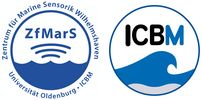Head

Prof. Dr. OLIVER WURL
Remote Sensing
As a sea-going research group, we gather a huge amount of in-situ data on our various expeditions. However, there are a few challenges that come with this mode of acquiring data. These challenges include but are not limited to the spatial extent and time span we can cover as well as the prevailing weather and sea state conditions. We employ remote sensing data to overcome these challenges and thus study a host of oceanographic processes. We obtain our remote sensing data primarily through two broad channels. Group obtained data from infrared and optical cameras as well as satellite data from our collaborative partners on various projects.
Some of our published work involved integrating satellite and in-situ data to study the temperature and salinity anomalies in the Sea Surface Microlayer (SML) during precipitation events. In this case, our high temporal resolution in-situ measurements gave insight into how fast these processes occur in the SML whiles the remotely sensed satellite data gave insight into greater spatial expanse.
In one of our on-going projects [NorthSat-X] we are working on understanding the relationship between satellite and in-situ measurement for the SML and using this understanding to provide the framework for improving satellite data product validation. These in-turn will help us study essential climate variables at the sea surface with better precision and quantify various relationships between these variables and the associated spatial among many others.
One other way we are using remote sensing data is for the study of the structure and conditions of slicks. A slick primarily refers to a visible and often thin film on the ocean surface that appears darker and smoother as compared to the surrounding water. An area of keen interest for the group is the prevailing wind conditions in, around and during slick occurrence.
Another area of interest is the response of the upper ocean layer to the passage of tropical cyclones. We use various remote sensing products to understand the upwelling of deep water in the wake of a cyclone and the consequences for air-sea interaction. We have studied these in relation to different geographical settings as well as the rare occurrence of binary interactions between cyclones.

